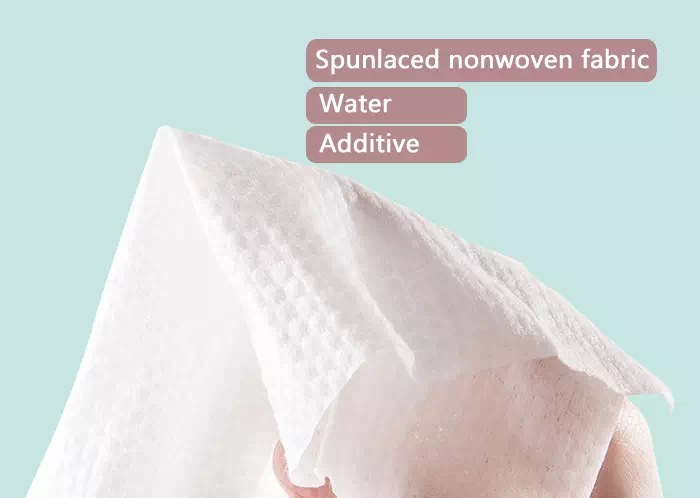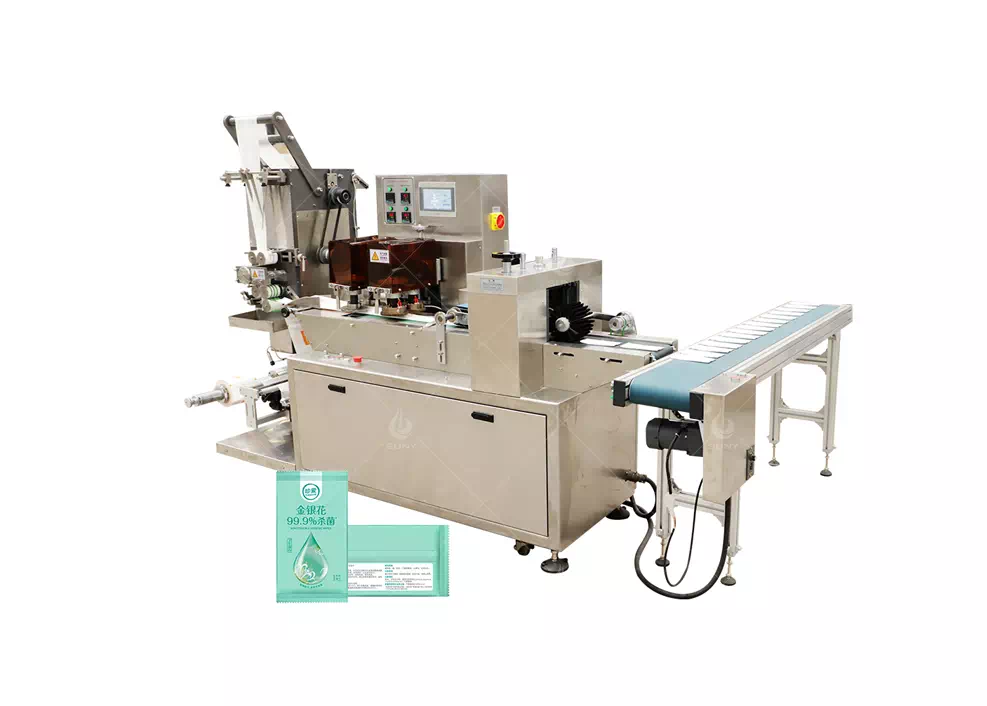What are the main ingredients of wet wipes?
The main ingredients of wet wipes are spunlace non-woven fabric, water and additives.
Spunlaced non-woven fabrics spray high-pressure fine water onto one or more layers of fiber webs to entangle the fibers with each other, thereby strengthening the fiber webs and giving them a certain strength. It can ensure a particularly soft and thick feel while also having a certain tensile strength.
Water:
The liquid medicine content in wet wipes generally accounts for about 80%. If the content is too low, the wet wipe will feel dry. On the contrary, if the content is too high, the wet wipe will feel too wet and inconvenient to use. Therefore, after testing, the proportion of liquid medicine is generally around 80%. More than 90% of the liquid medicine is water. In order to prevent the components in the water from reacting with the components of the liquid medicine, the water used in wet wipes must be specially treated water. This is what the “purified water”, “pure water” and “RO pure water” indicated in the ingredient list mean.
Additive:
There are a variety of additives in wet wipes, and the differences among wet wipes of various brands are also greatest. Most additives are labeled with chemical names that ordinary consumers cannot understand. In fact, although the supplies used are different, the functions are similar. The key is what these raw materials are used for.
•moisturizer
Propylene glycol is a solvent and a humectant. It can help the active substances in the medicinal solution dissolve in the water, making it difficult for the water to evaporate, and plays an antibacterial and antiseptic role, so it is included in almost all wet wipes.
•preservative
Wet wipes contain a lot of water and different substances. In order to maintain the activity of the effective substances, preservatives must be added. Common ones include phenoxyethanol, methyl paraben, paraben, etc., but the content is very low, so There will be no negative impact. In order to combat different types of bacteria, a compound solution of several preservatives is usually added to the same kind of wet wipes. This also shows that when purchasing wet wipes, you must pay attention to the production and use dates. It is best not to use expired wet wipes or wet wipes that have been produced for a long time.
•Antibacterial agents
There are many types of antibacterial agents, including chemically synthesized antibacterial agents and natural antibacterial agents. As the name suggests, their function is to eliminate bacteria and inhibit bacterial reproduction. Nonionic surfactants: polyoxyethylene hydrogenated castor oil, polyether.
This word is rarely used in our lives, but when it comes to washing powder, mothers must be familiar with it. Washing powder and most detergents contain non-ionic surfactants, which are used to remove dirt and grease. Cleaning effect.
•Chelating agents
Hydroxyethylene diphosphate tetrasodium, this is another very unfamiliar word. The function of chelating agent is to react with heavy metal ions in water or raw materials, so that these heavy metal ions are not absorbed by the baby’s skin with the use of wet wipes. .
•Other natural ingredients
Eucalyptus leaf essence (added to Nipiao wet wipes) is a natural fungicide
Chamomile oil (added to Pigeon wet wipes) has soothing and anti-inflammatory effects
Aloe vera essence (added in Huggies wet wipes) has moisturizing effect
The above is just a brief introduction to some of the main components of wet wipes. In the actual production process of wet wipes, it often needs to be customized according to your own needs. If you have any questions or issues about the production and manufacturing of wet wipes, please feel free to contact us for consultation.
CONTACT US
If you have any requirement or suggestion, please fill in the form and send to us, thanks! Email:sunymachine@gmail.com Whatsapp:+8613674945231




